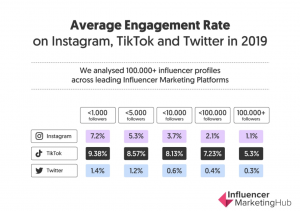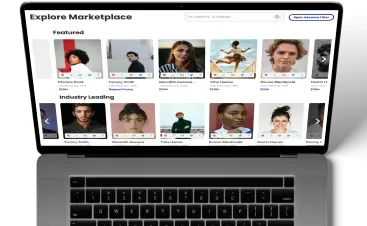Today, becoming an Instagram influencer is synonymous with fame and all the perks that come with it. Most influencers land sponsorships and brand deals and get showered in free products from the brands they love in exchange for promoting the brands to their followers. However, not every person with a couple of hundred thousand followers on Instagram is worth following. Here are 3 tips to help you steer clear of fake influencer accounts so you can focus on the ones worth following.
What are Fake Influencers?
Fake influencers are individuals who falsely inflate their social media presence and engagement metrics to appear more influential than they are. They may purchase fake followers, likes, and comments to create the illusion of popularity and credibility. These individuals often lack genuine expertise or authority in their purported niche and may use deceptive practices to attract brand partnerships and sponsorships. Working with fake influencers can be detrimental to brands, leading to wasted marketing budgets and damage to brand reputation. Identifying and avoiding fake influencers is crucial for brands seeking authentic and effective influencer partnerships.
How to Spot Fake Influencers?
Spotting fake influencers requires careful analysis of various factors beyond surface-level metrics. Here are some strategies to identify fake influencers:
-
Engagement Metrics
Look beyond follower count and examine engagement metrics such as likes, comments, and shares. Authentic influencers typically have consistent engagement rates that align with their follower count. Suspiciously high follower counts with low engagement rates could indicate fake followers or engagement manipulation.
-
Audience Authenticity
Assess the authenticity of an influencer’s audience by reviewing their followers’ profiles. Look for signs of fake or inactive accounts, such as generic profile pictures, low activity levels, and irregular posting patterns. Genuine influencers usually have followers who are real people with genuine interests and interactions.
-
Content Quality
Evaluate the quality and relevance of an influencer’s content. Authentic influencers typically create high-quality, original content that resonates with their target audience. Be wary of influencers frequently reposting or recycling content from other sources, which may indicate a lack of genuine engagement or expertise.
-
Engagement Patterns
Analyze the patterns and timing of an influencer’s engagement, such as the frequency and consistency of likes and comments. Genuine influencers often have organic, meaningful interactions with their audience over time. Suspiciously high spikes in engagement or irregular activity patterns could signal artificial engagement tactics.
-
Brand Partnerships
Examine the influencer’s history of brand partnerships and collaborations. Authentic influencers tend to collaborate with reputable brands that align with their niche and values. Be cautious of influencers who frequently promote unrelated or low-quality products, as it may suggest a lack of authenticity or integrity.
-
Social Proof
Look for social proof and validation from other sources, such as third-party influencer marketing platforms, industry experts, or peer recommendations. Genuine influencers often have a positive reputation and track record within their industry or niche.
By carefully evaluating these factors and conducting thorough due diligence, brands can better identify and avoid fake influencers, ensuring more effective and authentic influencer partnerships.
5 Tips to Spot a Fake Instagram Influencer
-
Dodgy Engagement
It is pretty easy to spot a fake influencer account by looking at engagement or the number of likes, comments, and views you see on his or her post. If an account has 10,000 followers but only gets 100 likes, then chances are the followers are not legitimate. Even if there is an impressive number of likes in the most recent posts but the ones from a week or a month ago only had a few, consider this another telltale sign. Marketplace data shows that engagement often lowers as an account begins to scale and grow. Different social media platforms have different engagement trend statistics, but a strong benchmark, like the follower rate, is around 5%. Anything under this rate can draw the illusion of fake followers and bot accounts driving potential activity on the influencers’ page. The data below shows the average engagement of accounts of various sizing scales.

-
Quality of Community Activity
Genuine influencers maintain active engagement with people from the same community, which you can see in the types of conversations going on in his or her posts. You can easily spot genuine comments, such as those that express admiration, refer to previous encounters with the influencer, or ask questions. These are easy to see as coming from real people instead of spam or two-word comments generated by bots. In most of these conversations, you can also see the influencer posting specific replies related to the post.
-
The Emoji Comments
I’m willing to bet that if you go to any influencer’s page and look in the comments of their most recent post, you will see many accounts (both real and fake looking) commenting on a string of emojis. Sometimes, these are just one emoji, but from what we’ve seen, it usually comes in a string of three emojis. What is going on here is either influencers are buying comments from bot-like accounts that will just comment emojis to avoid saying generic auto-generated phrases, or influencers are in engagement groups asking other influencers to comment emojis for them to ‘look and seem more legit’. These comments aren’t always fake, they’re just a trick that influencers use to build up engagement in hope to land themselves a post on the front of the explore page.
-
Activity Outside of IG
Do a bit of snooping and look for the influencer’s other social media accounts, such as Twitter, TikTok, or YouTube pages. You can find that real influencers link their social media accounts together so followers can easily jump from one platform to another. Genuine influencers often have equally strong followers on other platforms as well. A quick Google search can also come up with mentions and backlinks indicating how much authority the influence holds outside of IG. Real influencers spend time growing their content and community following across all social media platforms. In contrast, imitation influencers just spend their time developing their Instagram hoping to land lucrative brand deals.
-
Check the Tagged Photos
If you’re ever wondering, “Do people really like this influencer?” then a place to go for validation is the tagged photos section of their page. A great way to see growth on a page is through organic tags and reposts of the influencer’s content. If accounts repost photos the influencer posted, then the user is influencing people and contributing to the greater good of the Instagram content stream. But, if an account with 100,000 followers only gets a handful of tagged photos a year then it might prove they aren’t influencing anyone. Furthermore, check how the influencers are engaging with these tagged posts. If they support their fans by liking and commenting on posts, they can show a sense of heart.
Fake Instagram influencers are not the best source of content, nor are they the people you should follow if you want to grow your own brand on Instagram the right way. Take note of these tips so you can steer clear of fake accounts and streamline your feed with content from influencers who really matter.





